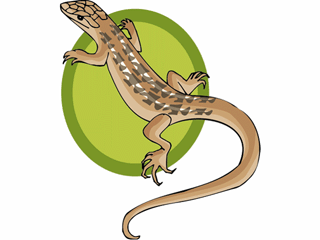 Name
_____________________________
Name
_____________________________ Name
_____________________________
Name
_____________________________
Reading Worksheet 35-1,
35-2
Section 35-1: The Reptilian Body
1. Reptiles Share Several Key ________________________
2. Reptiles live in all areas of the world except _________________________
3. List the 7 key features of reptiles. (fig 35-1)
_________________________________________________________________
_________________________________________________________________
_________________________________________________________________
_________________________________________________________________
4. Why are reptiles better able to move on land than amphibians?
_________________________________________________________________
5. Explain how a reptile can change its behavior to regulate its temperature.
_________________________________________________________________
_________________________________________________________________
6. Based on the graph in figure 35-2, where would you most likely find a lizard
at 7am? Where would you find the lizard at night time?
_________________________________________________________________
_________________________________________________________________
7. A Key Adaptation to _________________
Life Is Water Retention
8. How is the reptile's skin better adapted to living on land than the amphibians?
_________________________________________________________________
_________________________________________________________________
9. This type of egg contains both a water and a food supply for the developing
embryo: _____________________
10. Match the descriptions to the
part of the amniote egg
|
_____ amnion _____ yolk sac _____ allantois _____ chorion |
a. allows oxygen to enter the egg and carbon dioxide to leave the egg b. a membrane that encloses the embryo within a watery environment c. contains the developing embryo's food supply d. a membrane-covered cavity that stores waste products from the embryo and serves as the embryo's organ for gas exchange |
11. Reptiles Need More ______________ than Amphibians. Why? _________________________________________________________________
12. How many chambers does a reptilian heart have?
_________________________________________________________________
13. Blood that has been oxygenated in the lungs returns to the heart and enters
the _______________, from there, the fresh blood enters the ________________,
and then is pumped to the ____________ (See figure 35-5)
14. Reptiles have _____________ Fertilization.
15. Compare oviparous to ovoviviparous.
_________________________________________________________________
_________________________________________________________________
Section 35-2: Today's Reptiles
16. Lizards and Snakes Have a Unique
___________ Design
17. What is the world's largest snake? __________________
18. How is the jaw or snakes and lizards unique? ___________________________
_________________________________________________________________
19. What is the largest monitor lizard? ______________________
20. How are snakes and lizards alike? ______________________________________
______________________________________________________________________
21. Give two examples of constrictors: ___________________________________
22. Of the 13 families of snakes, only ______ are venomous. Name the types of
venomous snakes. ______________________________________________________
______________________________________________________________________
23. Other Orders of Reptiles are Less ________________
24. What is the difference between a turtle and a tortoise?
_________________________________________________________________
25. The upper part of the turtle's shell is called a ______________ and the
lower part is called the __________________
26. Of all the living reptiles, which is the most closely related to dinosaurs?
_________
27. Describe how crocodilians capture prey. __________________________________
_________________________________________________________________
28. Describe how crocodilian bodies are adapted to the way they hunt.
______________________________________________________________________
29. How are crocodiles different from alligators (see fig 35-11)?
_________________________________________________________________
30. How are tuataras different from other reptiles?
_________________________________________________________________
See "Up Close: Timber Rattlesnake" (page 790-791
31. What is the purpose of the rattlesnake's
pit organ? _______________________
32. What is the purpose of the Jacobson's organ? ___________________________
33. What are the effects of rattlesnake venom? ______________________________
_________________________________________________________________
34. Why do some rattlesnakes have longer rattles than others? __________________
_______________________________________________________________
35. Where does a timber rattlesnake live?